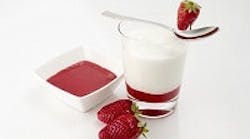Consumers are becoming more discriminating about color. While it goes without saying that attractiveness plays a major role in enticing the palate, vivid colors can end up turning off consumers by evoking some chemical cocktail. This paradigm shift is driving processors to search for more natural colorant sources that allow for cleaner labels.
Two of the most common colors sought in food and beverage manufacturing are reds and browns. And, both have landed in the news lately, with controversies previously addressed (see "Much Ado About Coloring."
This growing demand for clean label colors means even "natural" won't cut it with informed consumers. Case in point: The bright red cochineal is natural … but is derived from insects. The problem is finding a vivid red that is stable under processing conditions and has a long shelf life, so it won't fade.
In the web-only version of that same May article, we discussed how Starbucks was forced to find a new color additive for its Strawberry Frappuccino. The coffee drink previously was colored by carmine, but a vegan blogger revealed the colorant is derived from the scale insect. The revelation caused a small stir.
Starbucks quickly responded with a natural and non-insect replacement – apparently Tomat-O-Red from Israeli firm LycoRed (www.lycored.com), with U.S. offices in Orange, N.J. The company officially would neither confirm nor deny the report.
As the name implies, Tomat-O-Red is derived from tomatoes. Through a natural extraction process, a number of products result, including a range of vivid red colorants. In addition to being vegetarian, kosher and halal, they're stable in a range of pHs, temperatures and the presence of vitamin C, and they're non-migrating. While the original generation of Tomat-O-Red was characteristically the orangey red of tomatoes, new versions have created shades very close to that of carmine.
Browns are used to evoke warmth, sweetness or nuttiness and even a sense of comfort. But an off brown color can also make a product look unwholesome, stale or unappealing. The key is to hit the right hue that evokes a tempting naturalness.
"When it comes to the warm, brown sugar tones, many companies are turning toward Class I ‘Plain' caramel colors and caramelized sugar syrups as coloring options," says Brian Sethness, CEO of Sethness Products Co. (www.sethness.com),Lincolnwood, Ill.
[pullquote]
Class I colors are produced by heating high-dextrose corn syrup or sucrose, without adding any ammonia or sulfite reactants during the process. "These colors are preferred by the natural products retailers, and they fully comply with recent California Prop 65 requirements," Sethness adds. "The drawback to Class I offerings, however, is that they are much lighter than typical caramel colors and require longer cook times."
For consumers looking for a natural flavor/color combination, Sethness offers a line of three caramelized sugar syrups. These are typically used in products designated as "all natural" and can simply be labeled ‘sucrose' on product labels.
Customers describe the notes of these colors as ranging from sweet to roasted coffee, yet they provide light color tones. Sethness notes the colors in this line are commonly used in alcoholic beverages or by flavor houses.
To support the trend toward natural colorants, GNT USA Inc. (www.gntusa.com), Redwood City, Calif., developed its Exberry line of fruit-, flower- and vegetable-derived colors. The process begins with non-GMO produce cross-bred for vibrancy. Strong-colored fruits such as bilberries, currants, grapes, hibiscus, black carrots and red cabbages are used.
The concentrated color properties are then drawn via a solvent-free, physical process using only water to extract the resultant colorants. No preservatives are added and the products are allergen-free as well as kosher certified. All are eligible for a clean label, and specific shades can be customized for the specific application according to client needs.
While labeling colors gets tricky — a natural color is still, by legal definition, an "added color" if it is not natural to the product — the need for brightening, "correcting" and enhancing the visuals on the foods and beverages we enjoy will not change, even as color makers scramble to meet the exacting standards consumers insist on for what they put in their mouths.


